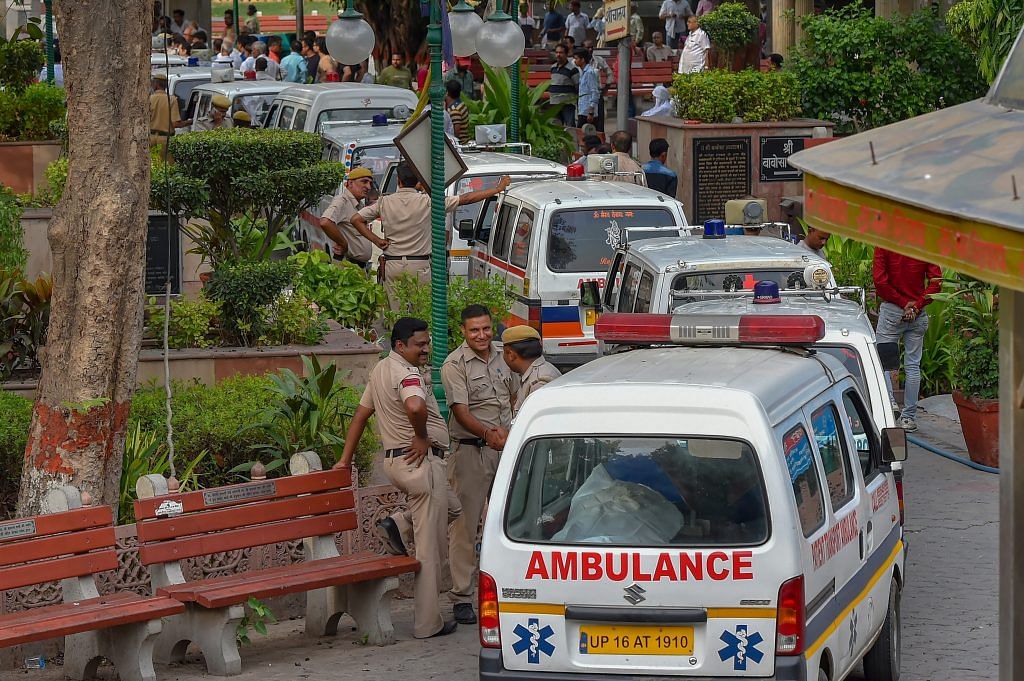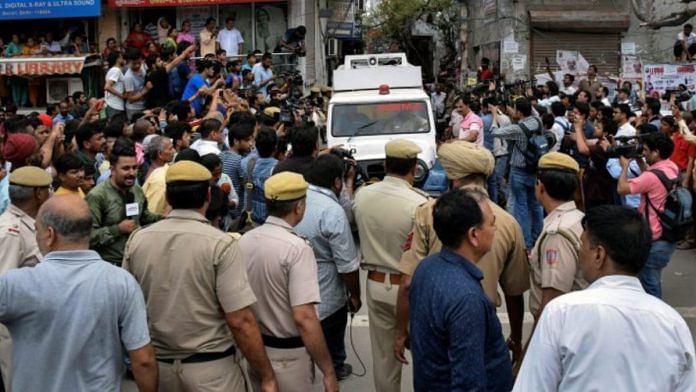The Burari deaths in 2018 created tremors that reverberated across India, and as someone who lived just a few kilometres away in Delhi, I could not really escape the horror. Netflix documentary House of Secrets: Burari Deaths brings back the surreal incident that reigned supreme on all forms of media and social media for months on end.
Burari Deaths is scary because it can happen to anyone. The root of the event isn’t supernatural, it’s mental health. The horrific assault on Lalit, the younger son, that should have been addressed by a mental health professional, was instead addressed through superstition and religion.
As journalists, police, neighbours, friends and even family try to make sense of what happened, it is clear that despite the case being closed, there are no real answers to be found.
The Netflix series, directed by Leena Yadav and co-directed by Anubhav Chopra, has three episodes and it reopens the case file with the help of police and journalists. This week, the Delhi Police finally filed a closure report in the case and said there was no ‘foul play’
Also read: Scary to neighbours, home to families — Burari house fights horror tag 2 yrs after 11 deaths
Why watch a known story
The mini-series revisits the deaths of 11 members of a joint family in northeast Delhi’s Burari. The Chundawat family, which consisted of a matriarch, her daughter, two sons and their families, was found dead by a neighbour on 1 July 2018. Ten of the family members were hanging, bound and gagged, in a circular formation from a mesh separating the ground floor from the floor above. The grandmother was found strangled in another room.
In an investigative style, the docuseries takes us to the day of the murder, builds up how the deaths were discovered and how the investigation even went off-course before the jackpot discovery of the 11 handwritten diaries spanning a duration of 11 years.
The anticipation does not come from the outcome in the series, because that is known, but the process itself. Just like Delhi Crime, another Netflix show based on the 2012 gangrape and murder in the capital, in Burari Deaths, the viewer feels like she is going behind the scenes, and the yellow tape. After all, the media circus back in 2018 ensured, unless actively avoided, that one could not really skip knowing what was happening in the case.
The documentary in itself, though similar in ways to others like Making A Murderer, The Keepers and Conversations with a Serial Killer: The Ted Bundy Tapes, also manages to be its own genre. It is probably the subject, or even the lack of extreme sensationalism that we have gotten used to, thanks to a section of Indian media, or even Bollywood. But it reins you in, stops you just when you are about to cross the threshold, and makes you realise, no matter what happened, we cannot simply be voyeurs to a tragedy.
Also read: Delhi family of 11 hanged itself to ‘thank gods for manglik daughter’s marriage’
‘We never suspected anything’
This sentence is a refrain throughout Burari Deaths series. No one suspected anything, least of all that a ‘normal’ family could have a 11-year-long history of collective psychosis. I mean, who would?
The Chundawats could almost feature in a Sooraj Barjatya film. The neighbours, extended family and friends, and even employees praise them as a ‘close-knit family’ that ‘went to the temple twice a day’ (Episode 1).
But how does one suspect? We like to say ‘aapne kaam se matlab rakho’ when domestic violence cases keep rising in our country, and it is always ‘apas ka mamla hai’ when anything happens. The eerie voiceover, and the haunting music by A.R. Rahman, makes it a shockfest you cannot log out of. And that is the other layer—how much do we as spectators contribute to the playing out of the macabre in society.
The horror is not so much because of the visuals of the hanging, which actually have not been used much, but the idea that this is a middle-class family, who could be your or my neighbour. They are upwardly mobile with a social media presence, active participation and interaction in society events and they rehearse for a wedding sangeet with a professional choreographer, and attend good educational institutions. And therein lies the real horror—we too can become another house of secrets.
We love being spectators, but what happened in Burari probably was the kind of gore our spectactorship was not prepared for, even as we were glued to TV channels back then, and are glued to the series now.
Also read: Burari deaths: Police register murder case, suspect occult connection
Supernatural or mental health stigma?
The shock-value in the series comes from the fact that once you peel away layers, it is actually a heartbreaking look at the situation of mental health awareness and the stigma associated with it in our country.
We turn to faith-healing in India more than mental health professionals, and the Burari deaths seem to be a reminder of what can go wrong in such scenarios.
We do not like to talk about mental health unless we are forced to. We like to use ‘psycho’, ‘crazy’, ‘mental’, ‘schizo’ as derogatory terms without even having Googled what it actually means. And an innocuous lane in a middle-class Delhi colony would hardly seem to be the place where terms like mental health, trauma, PTSD and psychosis would crop up in everyday conversations. But when it did, it was too late, and 11 people had already lost their lives.
The spooky element in the series is probably a product of what we as viewers wish over and over again—‘If only they had consulted a mental health professional’.

The answer is still hidden
If one manages to get out of the spooky after-feeling of watching it up close, one realises we will never know the perspective of the ‘possessed man’ Lalit, or of the children, the youngest one 15, who kept a deeply uncomfortable secret.
The ‘hold’ a patriarch has over his family in India is not really shocking. We all crack ‘desi family’ jokes about how almost every other Indian father is like Kabhi Khushi Kabhie Gham’s Amitabh Bachchan going, ‘Keh diya na, bas’ in all family matters. Except in the case of the Chundawats, this statement became so integral that even after the death of the patriarch, one could not escape it, or did not want to.
By the end of it, you might, like I am even now, avoid looking up at the ceiling of your house. The last time this happened was when I watched a particular episode of the (in)famous horror show Aahat as a child.
Views are personal.



